Continuing from part 2, this article discusses Disney-related easter eggs found in season 3 of Mickey Mouse, a series of shorts featuring classic Disney characters that can be found on Youtube.
One Man Band (3x02)
The primary inspiration for One Man Band seems to be Mary Poppins. The London setting, Mickey's appearance, and the one man band motif itself come from this film.
Details of the setting at the start of the short are taken from the opening scene of Mary Poppins. The gate, columns/lanterns, crowd around the performer, fountain on the right, and even the curves in the road appear in both the short and the film, as seen below.

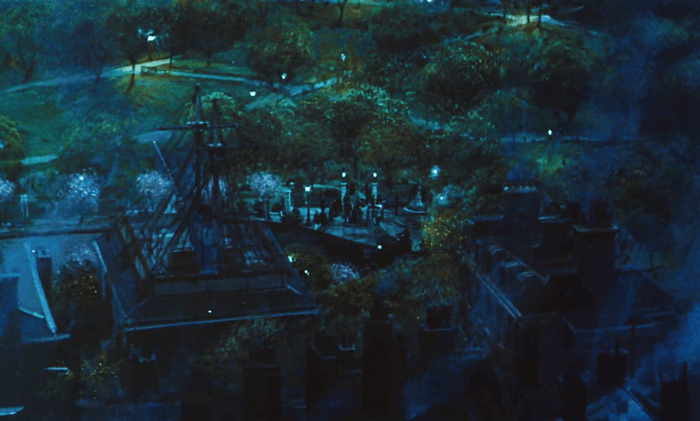
Bert
The details of Mickey's costume and instrument setup also bear strong resemblence to Dick Van Dyke's Bert in Mary Poppins. Mickey's particularly enthusiastic smile in the shot below may even be a nod to Van Dyke's trademark open-mouth beam.
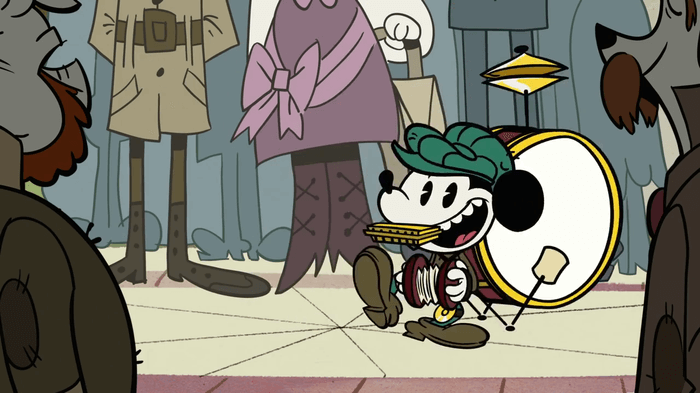

Goofy
This short isn't the first to feature a classic character performing as a one man band. In the 1937 short Mickey's Amateurs, Goofy appears on stage with a significantly more complex setup.
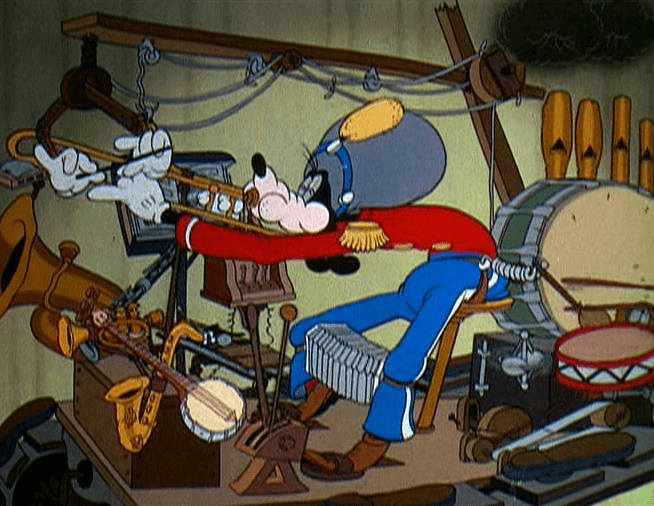
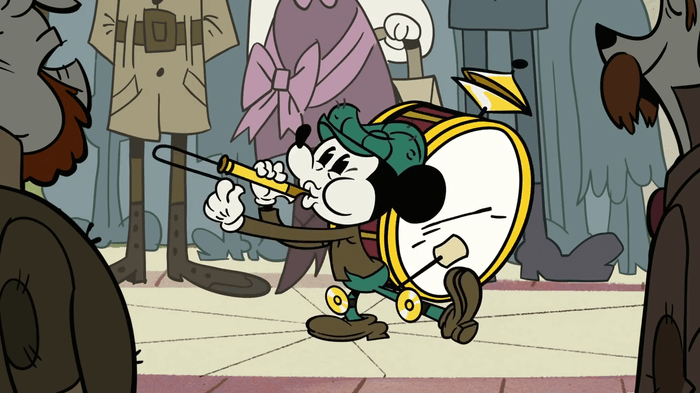
The comparison shots above show what may be a deliberate nod by the modern crew toward this earlier short. The slide whistle Mickey uses is evocative of Goofy's trombone in the 1937 short (it's worth noting that Bert does not use a slide whistle in Mary Poppins). This could merely be coincidence, of course.
Wish Upon a Coin (3x03)
Snow White and the Seven (Thousand) References
The first third and ending of Wish Upon a Coin parallel and parody the respective portions of Snow White and the Seven Dwarfs, Disney's first animated feature. There are thus straightforward references to the film that are too numerous to depict here (among them the presence of Snow White and the dwarfs, the singing of and lyrical play on "I'm Wishing", etc.). This section will be limited to specific visual references to the film.
The opening shot of the short is directly modeled on Snow White's first appearance in the film. Seconds later, what seems to be a sappy retelling is interrupted by the hilariously obnoxious Mickey and Minnie.

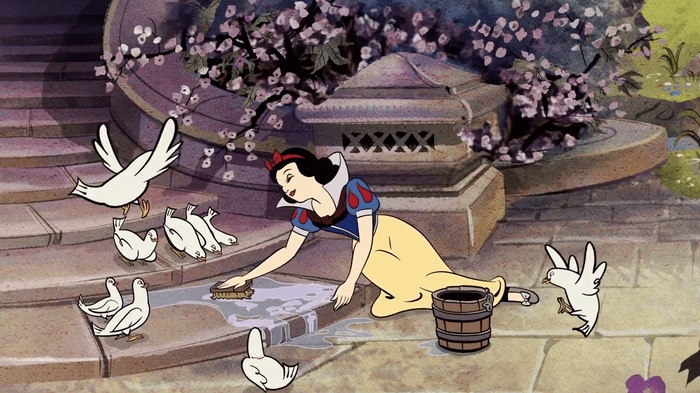
One of the most ingenious uses of the multiplane camera in the original film, this shot from underwater inside the well is echoed in the short.
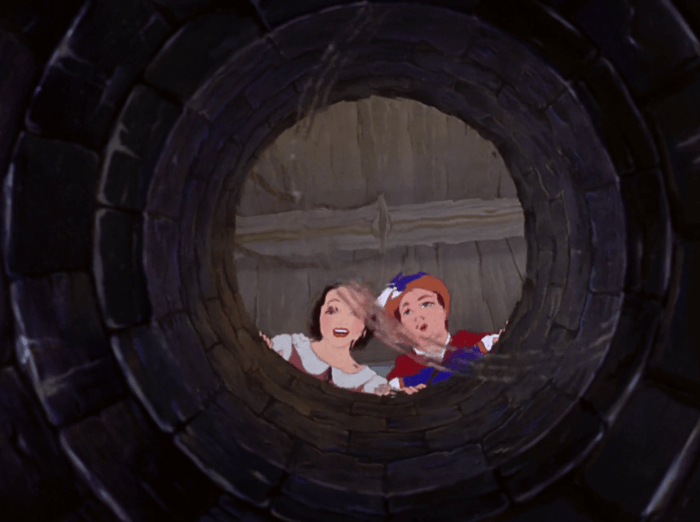
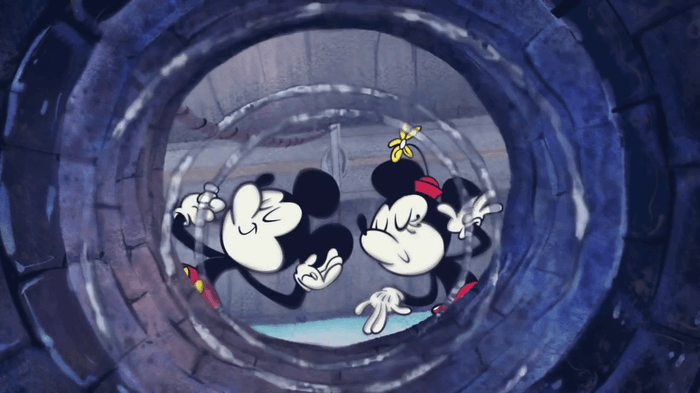
Possibly my favorite moment in the entire series is this blink-and-you'll-miss-it parody of the dramatic forest escape sequence from Snow White (followed by Mickey's hysterically nonchalant "whahabba").
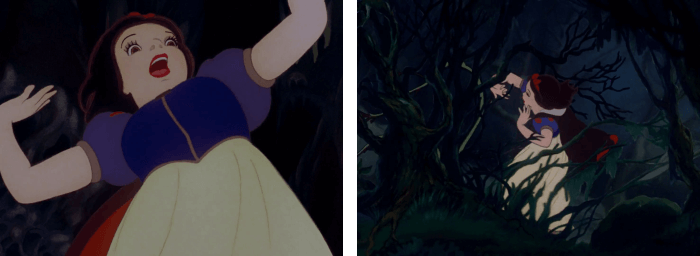
The iconic shot of the dwarfs holding vigil over Snow White is also recreated in the short.
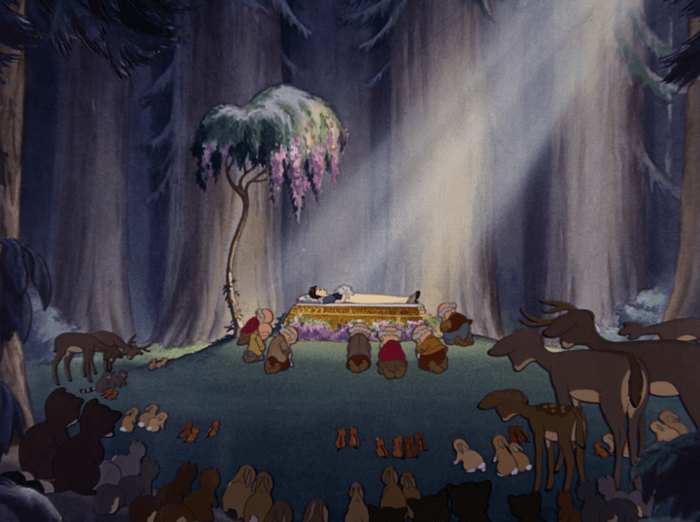

Finally, the ending of the film is parodied nearly shot-for-shot, with Pete replacing the horse (naturally).
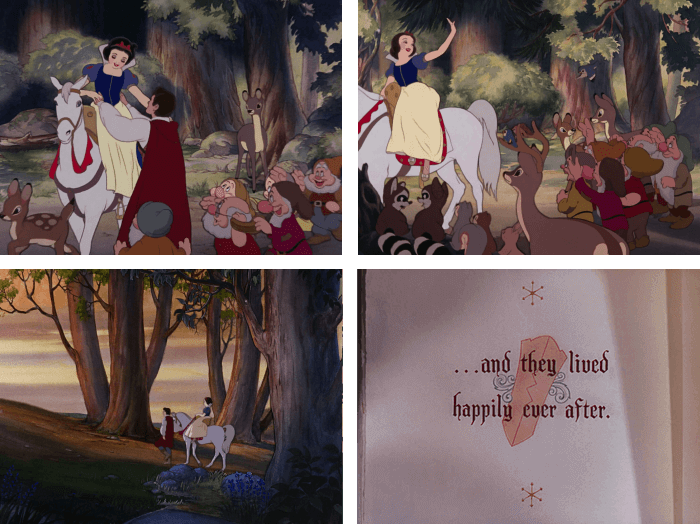
Peg-Leg Pete
Speaking of Pete, his appearance and characterization in this short harken back to classic works.
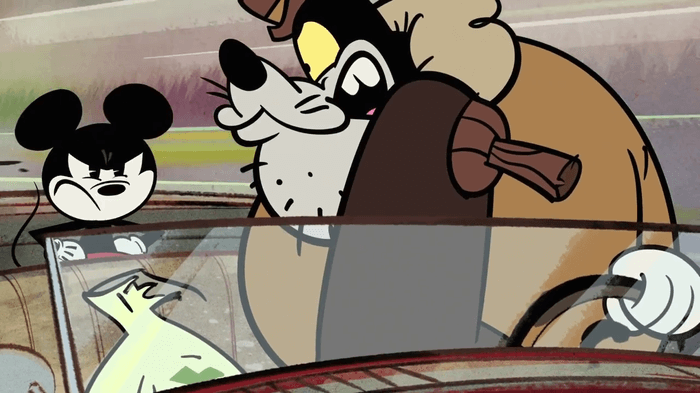
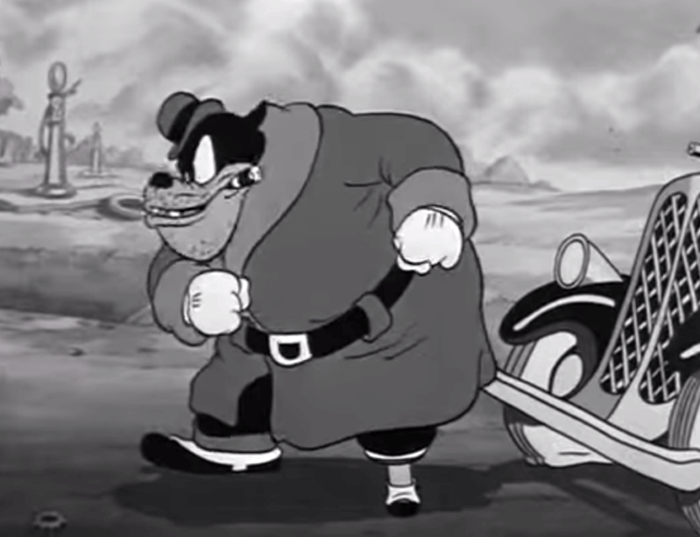
Pete has a peg-leg in Wish Upon a Coin. Pete has inconsistently had a peg-leg, and has sometimes been referred to as Peg-Leg Pete, since the 1935 short Mickey's Service Station. Prior to this series, the wooden appendage most recently appeared on film in the 2004 direct-to-video Three Musketeers adaptation, but also appeared in the Epic Mickey video game series beginning in 2010.
It is also notable that Pete returns to an openly villainous role in this short.1 Pete almost exclusively occupied antagonistic roles, with varying degrees of outright villainy, from his pre-Mickey introduction in the early 1920s Alice Comedies into the 2000s.2 His personality was recently tempered in Mickey Mouse Clubhouse, aimed at very young children, but he appears to have returned to his traditional role in these shorts.3
Minnie's Mashup
To try and calm down the panicking dwarfs, Minnie references several songs in a row: A Spoonful of Sugar (Mary Poppins), When You Wish Upon a Star (Pinocchio), A Dream is a Wish Your Heart Makes, and Bibbidi-Bobbidi-Boo (both from Cinderella).
Goofy
Goofy pops onto the screen to interrupt Minnie wearing something very strange: what appears to be an orange leotard or toga with black spots. He has worn a similar getup at least twice before. Once in How to be a Sailor (1944, pictured left below) and again in Goofy Gymnastics (1949, pictured middle below).
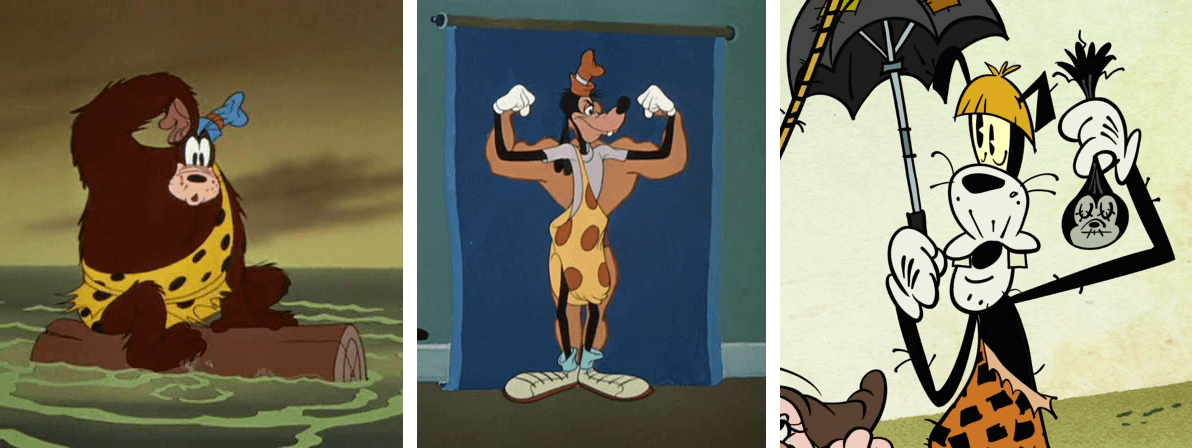
If anyone has an explanation for the umbrella and the shrunken head, I'd love to hear it.
Finally, toward the end of the short, Goofy is revealed to have wished for glass slippers that look suspiciously similar to those of Cinderella.
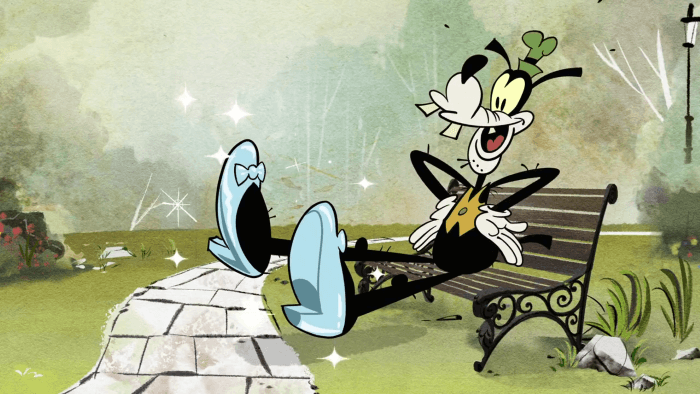
¡Feliz Cumpleaños! (3x07)
Los Tres Caballeros
The guitar-playing birds that appear alongside Donald in this short date back to the early 1940s, when Disney produced two films featuring vignettes about Latin America. The first of these films, Saludos Amigos (1942), introduced suave Brazillian parrot José Carioca. The second, The Three Caballeros (1944) completed the trio with Mexican rooster Panchito Pistoles. In the most well-known sequence of the film, the three perform the title song together.
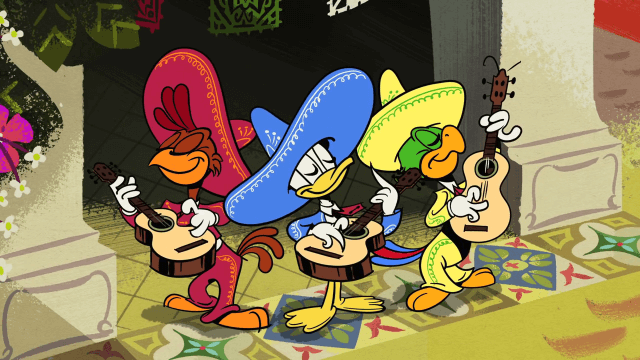
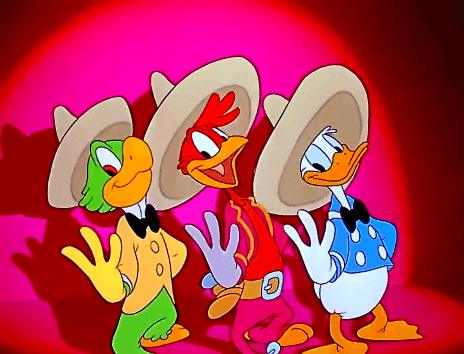
Today, The Three Caballeros can still be seen together in Disney parks. They appear in Mickey's Soundsational Parade in Disneyland, and are featured characters in Epcot's Gran Fiesta Tour.
Piratas del Caribe
At 1:01 in the short a woman (chicken) is seen being chased aroud a porch by a pirate piñata. This is a reference to an infamous scene of the Pirates of the Carribbean attractions in which awkwardly motionless animatronics orbit a doorway column in a similar fashion.
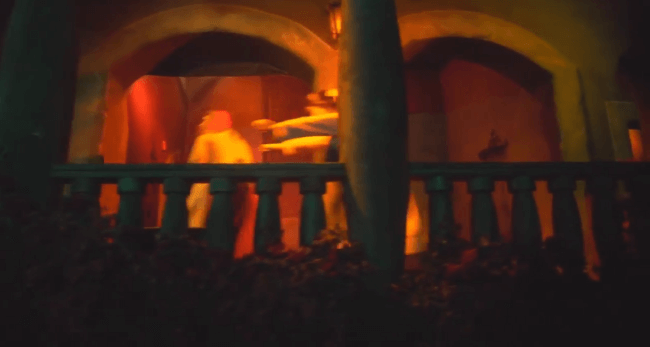
Wonders of the Deep (3x08)
This short contains numerous references to the 1954 Disney film 20,000 Leagues Under the Sea, adapted from the 1870 Jules Verne novel of the same name.4
The Ducktilus
Specific elements of Verne's ship Nautilus are parodied, the most obvious being the name of the submarine in the short, the Ducktilus. Despite the name, the exterior of Ludwig von Drake's sub bears little resemblance to the sub from the film. In fact, it looks closer to the vessels in Disneyland's Submarine Voyage attraction.
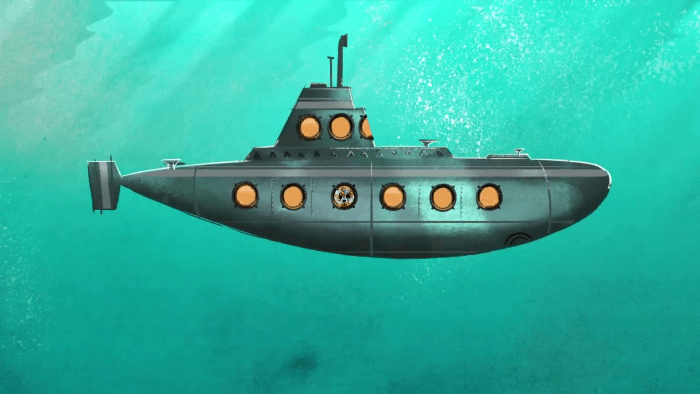
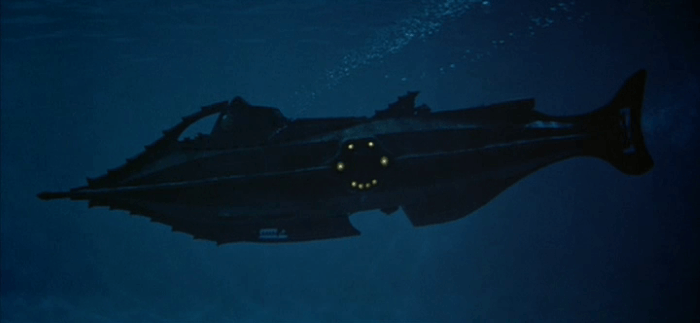
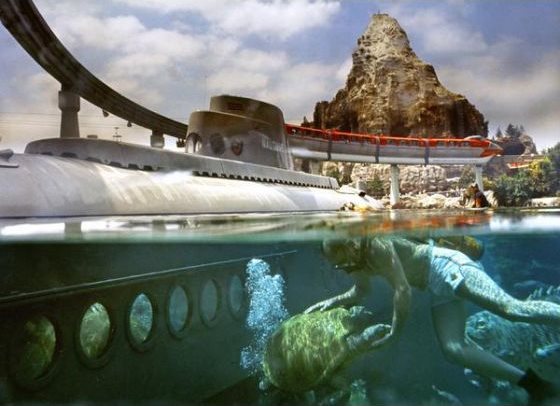
The interior, however, is a closer match to the film. Specifically, Captain Nemo's iconic pipe organ appears in the cartoon.
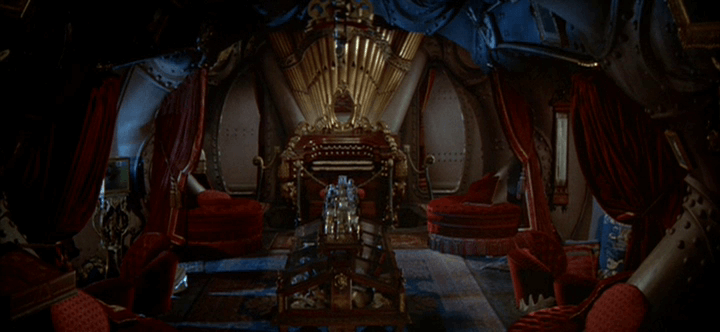
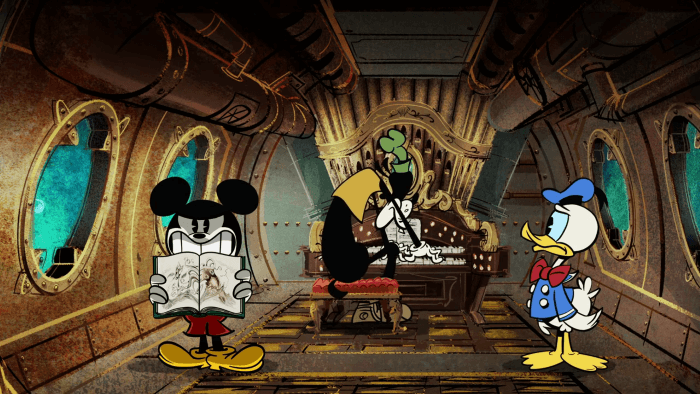
Goofy plays Bach's Toccata and Fugue in D Minor — the exact piece James Mason's Captain Nemo plays in the film.
Mermaids
In the cartoon, Minnie and Daisy appear as mermaids. Though mermaids don't appear in the original story or the Disney film, they did appear in the now-demolished Magic Kingdom attraction loosely based on the film.
In a second nod to Disney artist Mary Blair (see O Sole Minnie in season 1), Mickey holds up one of Blair's paintings, originally made as concept art for Peter Pan's mermaid lagoon.
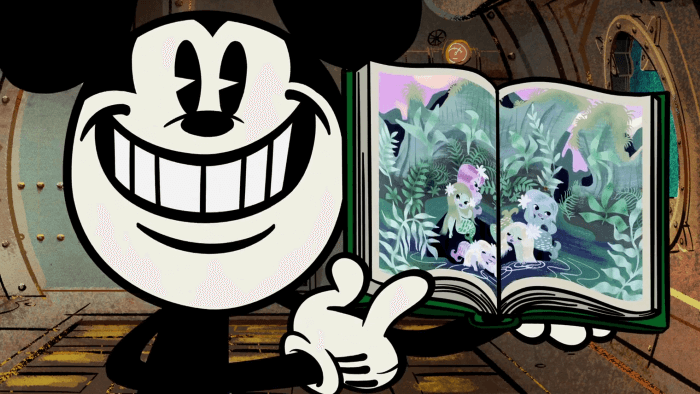
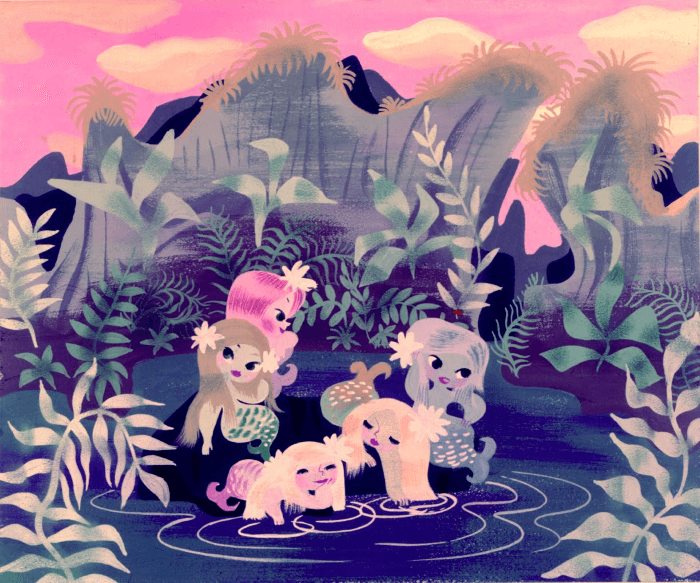
Monstro the Giant Squid
No riff on Leauges can be complete without an attack from a giant squid, and Wonders of the Deep does not disappoint.

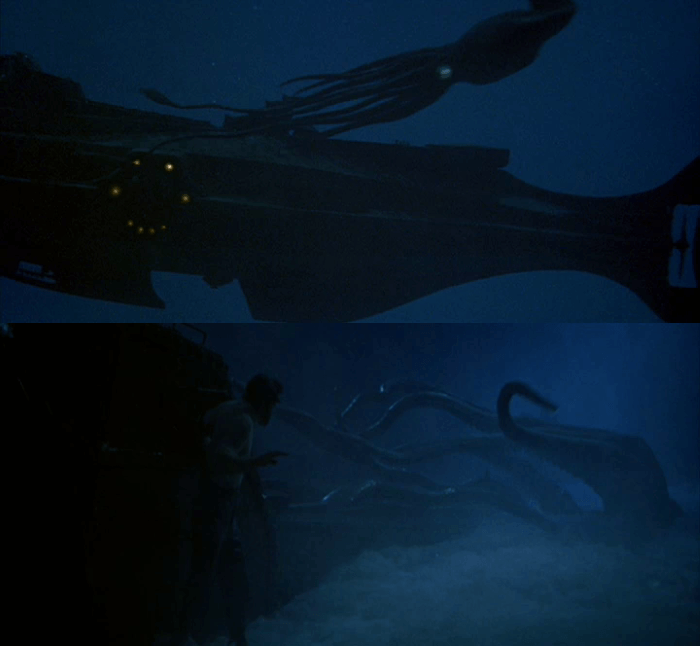
Mickey and Donald end up inside the belly of the squid, a plot point that may seem familiar to Disney fans as being very similar to the episode in Pinocchio where he is swallowed by the whale Monstro. In this short, Pinocchio and Gepetto somehow seem to have found their way into the stomach of another sea creature.

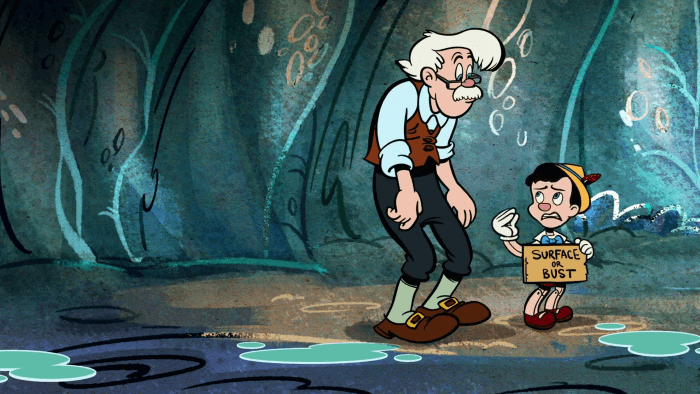
Notes
-
Pete's first appearance in this series, complete with peg-leg, was in the first season short Tapped Out, as Mickey's wrestling opponent. His appearance and personality here seemed like the more noteworthy of the two, as he more closely mimics the prototypical 1930s-40s Pete. ↩
-
The character in the Alice Comedies is arguably not the same Pete that later appears with Mickey Mouse. It can at minimum be assumed to be a prototype of the later Pete. ↩
-
Pete's villainy was also notably restrained in the early 1990s in Duck Tales and Goof Troop, though it returned in Mickey Mouse Works (1999) and House of Mouse (2001). ↩
-
Deliberately or not, Ludwig von Drake not only references the title of the book but repeats a common misconception about it when he says "Join me as we dive twenty-thousand leagues to explore the wonders of the deep." The original title was meant to be the distance traveled by the Nautilus throughout the story, not the depth under the ocean. Twenty-thousand leagues — more than 60,000 miles — is not reasonable as a depth given it is far greater than the diameter of the earth. ↩